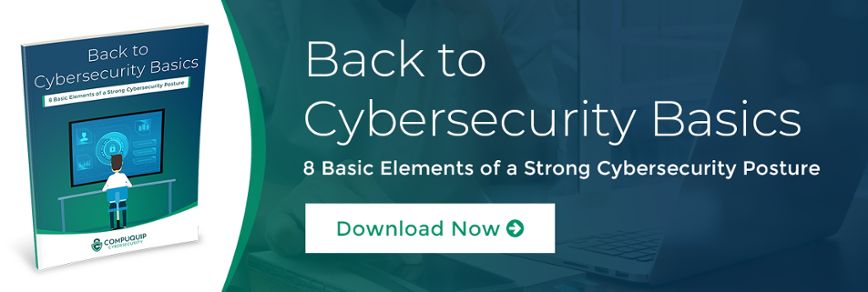Is Your Company Secure from Cyber Threats?
Here’s a question many chief information security officers (CISOs) are asked by their boards: “How do we know we’re secure?” The unfortunate and unavoidable truth is that no business is ever 100% safe from cybersecurity threats. No matter how much time and effort you put into securing your business against cyber threats, there is always a risk that your data will be compromised sooner or later. And, there is always more work to be done to minimize your cybersecurity risks.
There is no single solution or cybersecurity technology that will guarantee your business’ data is protected in perpetuity. Keeping your business’ sensitive data safe is a multifaceted problem that can’t be solved just by buying another security device.
However, this doesn’t mean that trying to protect your business from cyber threats is entirely futile. Working to mitigate your risks is a key part of avoiding the worst impacts of a data breach or other cybersecurity event. It’s just that the approach you take to securing your business needs to be something that is programmatic, trackable, and risk-based. You need the time to properly execute your cybersecurity strategy as well as a clear perspective on what your biggest risks are and how you can best address them.
So, what can you do to evaluate your company’s current level of risk so you can provide a detailed answer to the question “Is our business secure?” Here are a few things that you can do to assess your cybersecurity risks and improve your business’ overall security:
Start with an Asset Audit and Risk Assessment
One of the first things that businesses need to do is identify all of the critical IT assets that are on their business network. This includes:
- Databases;
- Personally identifiable information (PII);
- Trade secrets/intellectual properties;
- Employees;
- Workstations; and
- Operating systems/programs on network endpoints.
From there, it’s necessary to perform a risk assessment to see what could cause harm to those assets and how that could impact your business. For example, if your primary data storage system was to be hit by a ransomware attack and all of your data was left encrypted, how would that affect your company’s ability to keep functioning? How much money would you lose as a result of losing this data?
Using a risk assessment is a critical part of identifying your biggest vulnerabilities so you can effectively prioritize your cybersecurity efforts. However, a risk assessment isn’t the only thing you should do to verify how well-protected your business is—you also have to check how susceptible your business network is to attack.
Assess Your Network’s Vulnerability
Performing a vulnerability assessment to see how vulnerable your current network environment is to threats is a crucial step in protecting your network against an attack. In a vulnerability assessment, you can identify crucial cybersecurity weaknesses in your network, such as out-of-date security patches, incorrect firewall configurations, and the like.
Running this vulnerability check, in addition to your risk assessment, helps you identify which of your major cybersecurity risks are the most likely to happen. It also helps you to define how well-protected your business is from cyber threats versus what your acceptable risk profile is.
One key method of assessing your network’s vulnerabilities is to run a penetration test to see how your security controls and measures perform against threats or intrusion attempts. These tests simulate an attack against your network to see how well your security measures perform against a variety of known attack strategies.
Don’t Forget About Human Cybersecurity Threats
Remember this: You are never 100% secure. Why? One reason is that there is always the “human factor” of your business’ network security to consider.
Businesses can spend tons of money on the latest hardware and software—only for basic human error to render it all useless when an employee accidentally deletes a directory, sends confidential information to the wrong recipient, or falls for a phishing scam. These human cybersecurity threats to your business are inevitable, no matter how strong your network security systems are.
In fact, according to data cited by Security Intelligence, “84 percent of cyberattacks reported had been due to human error.”
The question is: “How do we ‘patch’ our employees to reduce the risk?” Creating a Security Education, Training, and Awareness (SETA) program is a good start. Through a SETA program that is continuous, current, and supported by upper management, businesses can greatly reduce the risk of employees making the kinds of basic cybersecurity mistakes that lead to data compromise.
Answering the Question: How Secure Are We?
When the CISO responds back to the board with an answer to this question, they should provide the board with a snapshot of the business before performing the tasks outlined above. Then, they should follow it with a snapshot of the business once these items are completed. This should help answer the question about how secure the business is.
For a complete guide of basic tasks all businesses should follow, please download and read the Back to Cybersecurity Basics: 8 Basic Elements of a Strong Cybersecurity Posture eBook for free at the link below.


